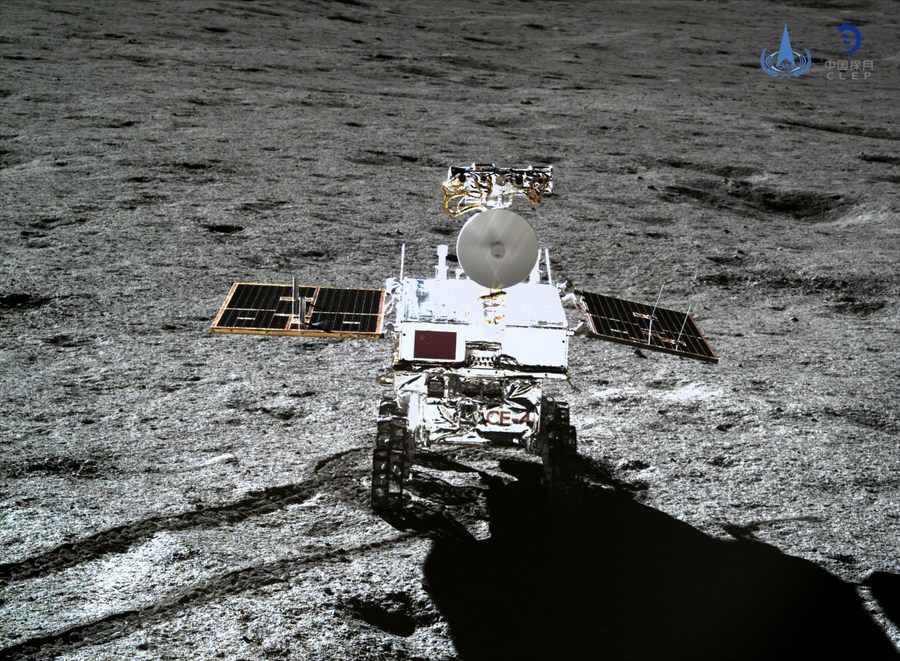ClickChina Cultural Exchange Co., Ltd.
Meteorite remnants on moon may reveal water
- Time of issue:2021-12-03 10:03
- Views:

Chinese scientists have found remnants of meteorites on the far side of the moon that might reveal a major source of water.
A group of researchers at the State Key Laboratory of Space Weather-which is operated by the Chinese Academy of Sciences' National Space Science Center-said it had recently identified some "glassy materials" inside a two-meter crater in the South Pole-Aitken Basin on the far side of the moon as remnants of a piece of carbonaceous chondrite that was not entirely vaporized when it struck the lunar surface.
Carbonaceous chondrites are meteorites originating in the asteroid belt near Jupiter and are believed to be among the oldest objects in the solar system. Their existence on the moon may act as a source of water on the barren sphere, according to the research team, headed by Liu Yang.
It published the finding in the November issue of Nature Astronomy, explaining that although carbonaceous chondrite fragments have been found in samples returned by the United States' Apollo missions, "no carbonaceous chondrite remnant had been directly observed on the lunar surface by remote-sensing exploration".
Impactors are believed to be a major contributor of water and ice on the moon. Compared with other types of small celestial bodies, carbonaceous asteroids have a higher water content, meaning water carried by such asteroids is more likely to survive vaporization and remain on the moon.
The remnants were spotted in hyperspectral images in the visible and near-infrared range taken by China's Yutu 2 lunar rover as it observed the crater, the Chinese researchers said.
Liu said the finding also indicated the possible existence of meteorite remnants in younger substances on the lunar surface, such as the dirt brought back by China's Chang'e 5 mission. Analyzing the remnants will help scientists advance their study of the composition and evolution of impactors in the Earth-moon system, and will expand their knowledge of the history of impacts in the solar system, he said.
Liu said that in the near future, remote-sensing spectral data with higher spatial resolution will provide scientists with the opportunity to find similar remnants at other places on the moon, allowing them to deepen their research on the origin and distribution of water on our closest neighbor in space.
The second Chinese rover on the moon, Yutu 2 has been operating for 1,065 Earth days, cementing its status as the longest-working rover on the moon. The record was previously held by its predecessor-Yutu-which worked on the moon for 972 days, far outliving its designed life span of three months.
Yutu 2 is part of the ongoing Chang'e 4 robotic probe mission, humanity's first endeavor to land on and closely observe the far side of the moon. The mission was launched by a Long March 3B carrier rocket in December 2018 at the Xichang Satellite Launch Center in Sichuan province.
The probe made a soft landing on the far side of the moon on Jan 3, 2019, and then released Yutu 2 to roam and survey the landing site in the South Pole-Aitken Basin, the moon's largest and oldest recognized impact basin.
From ChinaDaily
ClickChina Cultural Exchange Co., Ltd. All rights reserved 鄂ICP备13001903号 Powered by 300.cn




